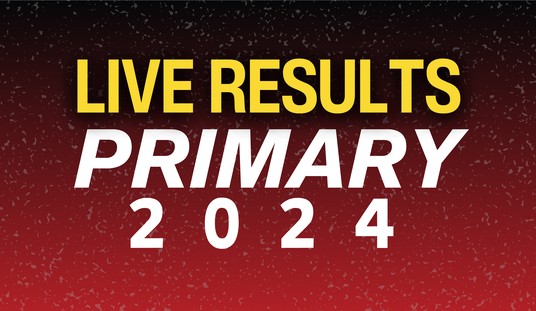In the words of an old song, we’re “forever blowing bubbles.”
Fearing deflation and falling prices and general sluggishness (three things that need not go together), the wizards of our economy break every rule in old-time political economy to make sure that prices remain high and money remains cheap.
The whole thing leads to boom (ballooning, over-exuberant growth) and bust (collapse of multiple institutions, vanishing of fortunes, and massive unemployment).
Reconsider our recent history:
In the wake of the collapse of the dot-com boom and the shock of 9/11/01, the Federal Reserve — our central bank — inflated the money supply and kept interest rates really, really low. Spectacularly low. Amazingly subterranean. Expert opinion (read: wrong opinion) thought that you couldn’t have two major bubbles burst within the span of a mere decade, so the Fed threw caution to the winds.
This spurred growth in a heavily government subsidized-and-manhandled sector of the economy, the housing market. People went crazy, flipping, over-buying, over-extending themselves.
Then came the bust, so the presidents (Bush II, first, and then Bush III, er, I mean, Obama), and Congress, and the Fed worked mightily together to pump air back into the burst bubble. Bailouts. Monetary manipulations. “Heroic measures.” (Politicians like to think of spending money as heroic.) And yet . . . the economy, two years and trillions later, still seems limp and drained.
So the Fed now prepares itself to really let open the money nozzle, filling up the economy with yet more money.
The theoretical impasse of the last 50 years in macro theory, between monetarists and Keynesians, has now bequeathed us a double-barrel policy response: Borrow to spend, and create money to spend. I don’t know which is worse.
Recommended
I’m tempted to say “the Keynesian response,” because after enduring the Keynesian bromides of Paul Krugman and his allies in government, borrowing money to prime the engines of market activity strikes me as utter nonsense. Debts have to be repaid. Which, if they are too big (and borrowing trillions now means more to pay back later), can be disastrous.
No wonder the undercurrent in a lot of conversations these days is the idea of just not paying the debt back.
Conservatives used to attack liberals for “throwing money” at problems. With George W. Bush (unrepentant bailer-outer) and Barack Obama, perhaps the phrase should be amended: “Throwing borrowed money” hysterically . . . in the “audacious hope” that something might stick.
But throwing around newly created money doesn’t seem any better. There’s a reason why Ron Paul’s more popular now than ever, the Federal Reserve has become a laughingstock, and the Austrian School of Economics is experiencing a revival amongst regular folk as well as intellectuals.
The Keynesian/monetarist impasse now discredits itself in the marketplace of ideas in its most watered-down form, as a political compromise, the dual Keynesian/monetarist One-Two Punch of the money-throwers in Washington. Neither Keynes nor Friedman would likely approve of today’s take on their ideas, but, hey, intellectually neither side ever sported a theory of capital structure, of how production really works, where progress actually comes from.
More to the point, with our leaders hysterically throwing money around in two different ways, it’s harder and harder to make sense of the ideas behind government macro-management. Government can’t manage. It can’t even set up pension systems properly. How can it manage “the economy”?
Fed wisdom is so low on the popularity index that Time blogger Stephen Gandel wonders about a Fedamageddon, a “Civil War.” Over monetary policy.
Well, something’s gotta give, somehow. If our leaders remain so intellectually bankrupt as to offer only more debt and more monetary creation as the solution, our problems can only grow. Until utter debacle. Or über debacle.
Though I don’t see any easy way out of this, at present (given current conditions), inflation, boom, and bust do not have to be a way of life. We could establish sound money along with sound fiscal policy.
Under such policy, markets can correct themselves after a bubble bursts, without reflating the previous bubble or starting a new cycle of boom and bust. But to allow for this self-correction (the last time this happened in anything close to a pure form was in the early ’20s), politicians have to remain humble, not promise the moon, not save us from every heartache and tragedy. People in markets must see prices fall, and react accordingly. There must be no artificial barriers (price floors or ceilings) in housing prices or wages or farm products or what-have-you.
Further, we must realize that the major cause of continuation of the current bearish economy is low expectations. This comes down to one word: fear.
Fear . . . that the government will do all the wrong things.
The cure for this fear is not monetary fiddling. It’s not bailing out creditors or car companies. It’s doing the right thing. With entitlements, with budget deficits, with all the current structural problems of government. Were these elements addressed, and politicians serious about not making matters worse by socializing whole sectors of the economy (can you say “health care”?), recovery would come galloping back.
Without a bust waiting ’round the next bend.
But, to do that, another crucial bubble must burst: The idea that politicians and bureaucratic experts “just know” how to “run” an economy. Pricking that bit of hubris needs to become a major sport. Boom and bust ain’t over until this last bubble pops.
























Join the conversation as a VIP Member